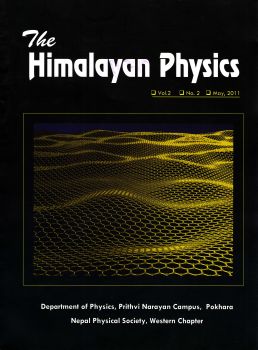Etching of Crystalline Silicon in Thermal Environment
DOI:
https://doi.org/10.3126/hj.v2i2.5209Keywords:
Isotropic and anisotropic etching, MEMS, SOI, LPCVD.Abstract
Thin wafer have become a basic need for a wide variety of new microelectronic products. Wafers that have been thinned using wet etch process on the backside have less stress compared with standard mechanical back grinding. Isotropic wet etching of silicon is typically done with a mixture of nitric and hydrofluoric acids. As the silicon is etched and incorporated in the etching solution the etch rate will decrease with time. This variation has been modeled. The focus of this paper is to compare the process control technique for maintaining a consistent etch rate as a function of time and wafer processed.
Keywords: Isotropic and anisotropic etching; MEMS; SOI; LPCVD
The Himalayan Physics
Vol.2, No.2, May, 2011
Page: 38-42
Uploaded Date: 1 August, 2011
Downloads
Downloads
Published
How to Cite
Issue
Section
License

The articles published in the Himalayan Physics are distributed under a license CC BY-NC-SA 4.0.




